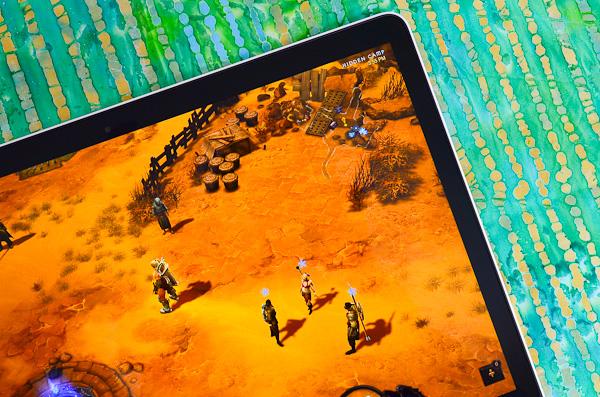The next-gen MacBook Pro with Retina Display Review
by Anand Lal Shimpi on June 23, 2012 4:14 AM EST- Posted in
- Mac
- Apple
- MacBook Pro
- Laptops
- Notebooks
Achieving Retina
To make the MacBook Pro’s Retina Display a reality Apple had to work with panel vendors to build the panels it wanted at a reasonable cost, as well as deliver the software necessary to support insanely high resolutions. There was another problem Apple faced in making the rMBP a reality: the display pipeline of the GPUs Apple wanted to use didn't officially support scaling to the resolution Apple demanded of them. Let me explain.
All modern GPUs have fixed function scaling hardware that is used to efficiently scale between resolutions. A scaler either in your GPU or in your display panel is what lets you run non-native resolutions at full screen on your LCD (e.g. running 1680 x 1050 on a 1920 x 1080 panel). None of the GPUs used in the Retina Display MacBook Pro officially support fixed-function scaling of 3840 x 2400 or 3360 x 2100 to 2880 x 1800 however. Modern day GPUs are tested against 2560 x 1440 and 2560 x 1600, but not this particular 5MP resolution. Even 4K resolution support isn’t widespread among what’s available today. Rather than wait for updated hardware and/or validation, Apple took matters into its own hands and built its own GPU accelerated scaling routines for these higher resolutions. Fixed function hardware is almost always more efficient from a performance and power standpoint, which is why there’s some additional performance loss in these scaled resolution modes.
What’s even crazier is Apple wasn’t pleased with the difference in baseline filtering quality between the Intel HD 4000 and NVIDIA GeForce GT 650M GPUs. As the Retina Display MacBook Pro would have to regularly switch between GPUs, Apple wanted to ensure a consistently good experience regardless of which GPU was active. There are a lot of filtering operations at work when doing all of this resolution scaling, so rather than compromise user experience Apple simply wrote its own default filtering routines. Since you want your upscale and downscale quality to be identical, Apple had to roll its own implementation on both. Apple’s obsessive attention to detail really made it possible to pull all of this off. It’s just insane to think about.











471 Comments
View All Comments
Ushio01 - Saturday, June 23, 2012 - link
http://www.youtube.com/watch?v=otPL8KwKQmwatata - Saturday, June 23, 2012 - link
>...as it was Microsoft's inaction on the software side that really hurt the PC OEMs over the past several years.Care to elaborate?
DeciusStrabo - Saturday, June 23, 2012 - link
Bad, weak DPI-scaling, no useable Touchpad integration (while Apple's work flawlessly), missing drivers and support for new technologies.ananduser - Saturday, June 23, 2012 - link
Bootcamp is the one with the poor drivers. The driver issue Windows faces on a mac is only due to Apple's shoddy bootcamp.solipsism - Saturday, June 23, 2012 - link
Looks like someone uses 1Password to login to AT.SteveTheWalrus - Saturday, June 23, 2012 - link
"maximum spinning speeds of just over 6000 RPM" Wait 6000? that is 100 times a second...seems a little fast to me..dagamer34 - Saturday, June 23, 2012 - link
Yep, and it sounds like a jet engine when it does.tipoo - Saturday, June 23, 2012 - link
That's actually right. They can go pretty damn fast.Braincruser - Saturday, June 23, 2012 - link
Car engines can go 6000 rpm no problem, why would that be a problem for a small fan?zappb - Saturday, June 23, 2012 - link
The weakest part of.this laptop is the keyboard (having tried it, it feels a bit squishy and not as good as previous mb pros - imho, Anand - what do u think?